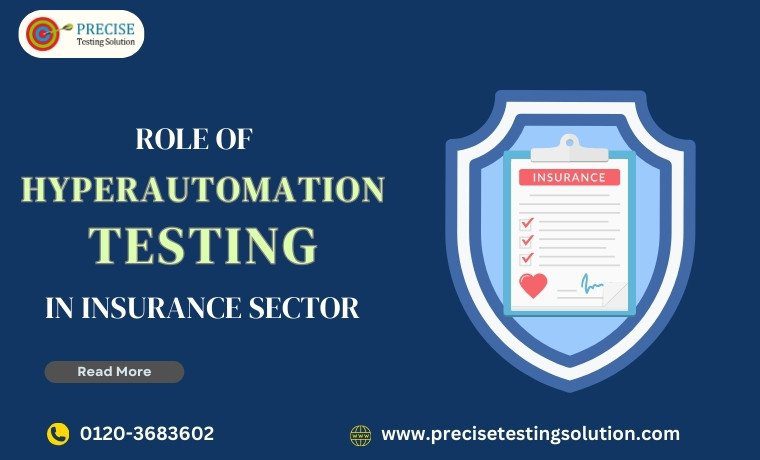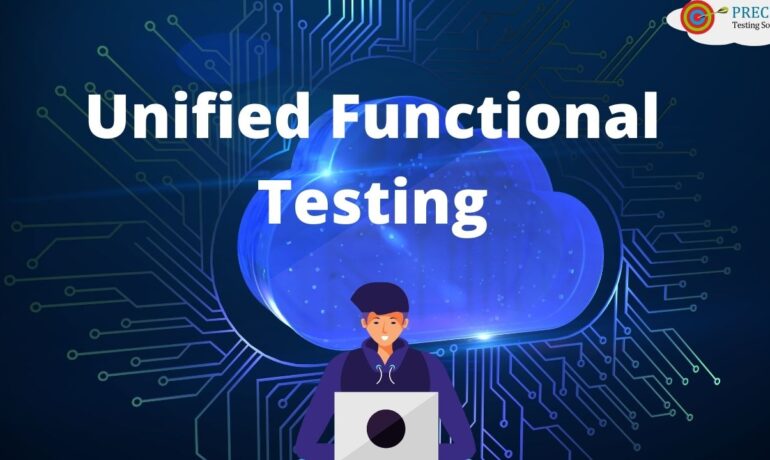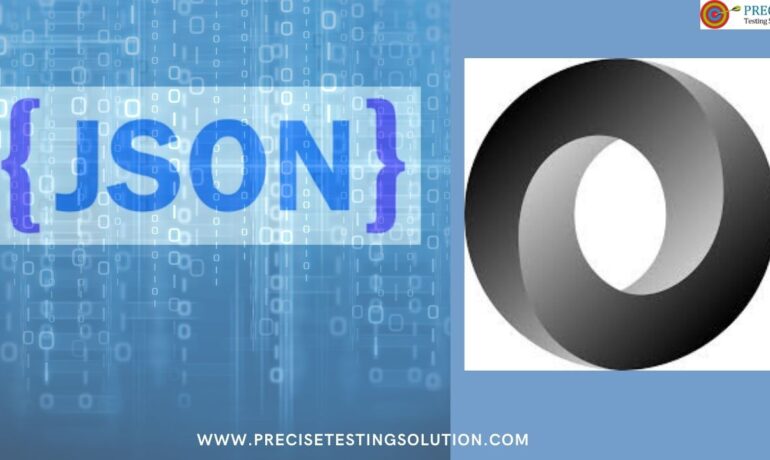The Evolving Landscape of Hyperautomation Testing
Emerging technologies, changing consumer expectations, and changing regulatory requirements are characteristics of the insurance industry’s landscape as it changes. Advanced analytics, artificial intelligence, machine learning, and automation are being used by insurance businesses to automate processes, improve customer experiences, and maintain a competitive edge that can stay up with the quick developments in the insurance business. In this blog post, we’ll look at how hyperautomation testing for the insurance industry plays an important role in the modern insurance industry’s success.
Table of Contents
Why Hyperautomation testing is Crucial for Insurance Sector?
The term “hyperautomation testing” refers to an all-encompassing testing strategy that integrates automation, artificial intelligence (AI), machine learning (ML), and robotic process automation (RPA) to streamline and optimise numerous testing tasks throughout an organisation. It entails automating repetitive and manual tasks, integrating various systems, utilising RPA for process automation, leveraging AI and ML algorithms for smart and intelligent testing. Hyperautomation testing plays an important role in the insurance sector due to the following major reasons.
- Testing with hyperautomation attempts to increase testing productivity, quicken test cycles, increase test coverage, and provide quicker time-to-market for software applications. Hyperautomation testing enables insurance organisations to increase the quality, scalability, and dependability of their products and services by leveraging the power of automation and cutting-edge technologies.
- Hyperautomation testing also helps insurance businesses to make sure that regulations are followed. The insurance industry is highly regulated, and it is crucial to comply with all rules and laws. Insurance companies can validate compliance requirements by automating the testing of rules, calculations, and data accuracy through hyperautomation testing. By doing this, compliance risks are reduced, and expensive fines are avoided.
- Streamlining the testing process is one of the main functions of hyperautomation testing in the insurance industry. Insurance organisations can greatly reduce the time and effort needed for testing by automating repetitive and time-consuming operations including test case preparation, data setup, and test execution. This enables quicker system updates, regulatory changes, and time to market for new insurance products.
- By enabling quicker feedback loops, improved test case generation, better test execution, and greater insights into the quality of software systems, hyperautomation testing completely transforms the conventional testing methodology. In general, hyperautomation testing is a game-changer for the testing industry, allowing businesses to keep up with the demands of the quickly changing digital landscape of today.
Issues of implementing Hyperautomation in the Insurance Sector
Due to its complex systems, governmental regulations, and changing client expectations, the insurance business has testing issues. For insurance operations to be reliable, secure, and effective, these issues must be understood and resolved. Let’s look at some of the main issues with hyperautomation testing in the insurance sector.
- Insurance System Complexity: A significant amount of data, various interaction points, and complex business processes are all included in insurance systems. Various policy kinds, product configurations, and business rules must all be tested when putting such sophisticated systems through their paces. It can be difficult to manage the complexity of these systems and still guarantee accurate and reliable testing.
- Data Accuracy and Integrity: Accurate and trustworthy data are crucial to the insurance industry. To prevent errors, ensuring consistent policy information, and supporting correct risk assessment and underwriting, it is essential to test the quality and integrity of data across numerous systems and databases. But it can be difficult to ensure data quality, consistency, and privacy, especially when working with outdated systems and data transfer.
- Compliance and Regulatory Considerations: Regulations and compliance standards for the insurance sector are very strict. Insurance systems’ adherence to legal requirements, industry standards, and regulatory requirements must be tested to confirm this. Thorough and rigorous testing is necessary to ensure compliance with data protection laws, consumer privacy legislation, and policy directives, including validating calculations, assuring correct reporting, and confirming compliance with specific mandates.
- Integration With Outdated Systems: Insurance businesses are putting more effort into enhancing the user experience because of the expansion of digital channels and self-service choices. To meet user expectations, it is essential to test the usability, responsiveness, and efficiency of digital interfaces and mobile applications. Additionally, evaluating the end-to-end digital processes, including as online policy issuance, claims filing, and customer care, becomes crucial for a flawless and positive user experience as insurance businesses go through their digital transformation.
- Rapid Technology Advancements: With the use of robotic process automation, machine learning, artificial intelligence, and data analytics, insurance technology is fast expanding. It’s difficult to keep up with these developments and efficiently test new technologies. Testing artificial intelligence (AI) models, algorithmic underwriting, chatbots, and automated claims processing calls for specialised knowledge, data validation methods, and thorough test plans.
The future of Hyperautomation in Insurance Industry
The insurance business is prepared for tremendous breakthroughs and a paradigm-shifting influence from hyperautomation testing in the future. Hyperautomation testing will be essential in guaranteeing the dependability, effectiveness, and security of insurance systems and processes as technology continues to develop and disrupt the insurance industry. The following significant factors will influence the direction of hyperautomation testing in the insurance industry.
- ML and AI Test Automation: The use of machine learning (ML) and artificial intelligence (AI) technologies in hyper automated testing will increase. AI-powered testing tools will make it possible for self-learning systems to generate intelligent test data, automatically modify and optimise test cases, and spot trends and abnormalities in test results. Insurance businesses will be able to increase testing efficiency and precision with the aid of ML algorithms that will aid in defect prediction and test coverage optimisation.
- Hyperautomation for Emerging Technologies: Hyperautomation testing will broaden to include these new sectors as insurance businesses implement cutting-edge technologies like blockchain, the Internet of Things (IoT), and augmented reality (AR). IoT-enabled insurance devices, blockchain-based insurance smart contracts, and AR-based claims processing systems will all be tested for compatibility, security, and performance using test automation frameworks.
- Integration with Robotic Process Automation: To automate end-to-end business operations, including as data entry, claims verification, and policy administration, Robotic Process Automation (RPA) will be closely connected with hyperautomation testing. RPA bots will help with managing test environments, running test scripts, and producing test reports in addition to doing repetitive activities. The increased efficiency, decreased risk of human error, and freed up resources will allow testing activities to be more complicated.
- Shift towards Continuous Testing: The industry trend of continuous testing, in which testing is seamlessly incorporated throughout the software development lifecycle, will be supported by hyperautomation testing. Automated testing will be added to continuous integration and delivery (CI/CD) pipelines at each level, enabling faster feedback loops and earlier detection of flaws. Insurance firms will be able to produce high-quality software products and services with less time to market thanks to continuous testing.
- Increased focus on Security Testing: For insurance systems, security testing will be even more important because of the increasing frequency and sophistication of cyber threats. Robust security testing techniques including threat modelling, penetration testing, and vulnerability assessments will be a part of hyperautomation testing. To preserve sensitive client data and guarantee industry compliance, advanced security testing technologies will be used to find and fix vulnerabilities in insurance applications.
- Adoption of Cloud-based testing: Cloud-based testing platforms will be used more and more by the insurance sector to improve scalability, flexibility, and cost-effectiveness. Insurance businesses will be less reliant on on-premises infrastructure thanks to cloud-based testing environments that offer quick provisioning and scalability of test resources as required. Furthermore, cloud-based testing solutions will offer sophisticated analytics and reporting features, enabling real-time test execution monitoring and insights into testing data.
Conclusion
To sum up this blog post, we can say adopting hyperautomation testing is essential to remain competitive, improve client experiences, and lay the route for future success as the market continues to grow. Insurance organisations may open new opportunities, reduce risks, and survive in the constantly shifting insurance market by realising the benefits of hyperautomation testing and investing in the essential tools, skills, and resources. Insurance businesses can streamline their testing processes, shorten time to market, and produce high-quality software solutions that satisfy policyholders’ changing needs by adopting hyperautomation testing. It is a tool to promote digital change and achieve excellence in the insurance industry, not just a technique to keep the system stable.
Software development teams who are looking for trustworthy and effective testing procedures, Precise Testing Solution has several benefits to offer. It expedites the formulation and execution of tests while ensuring scalability and maintainability by giving an already constructed framework for automation. A strong automation framework also becomes a crucial tool for producing software releases of the highest quality and satisfying customer expectations because it can reduce costs and promote collaboration.
For more information, visit our website at www.precisetestingsolution.com or call our office @ 0120-3683602. Also, you can send us an email at [email protected]
We look forward to helping you!
How to Get Started with UFT Testing
How UFT Works Micro Focus created the robust and
How to Use JSON for Data Interchange
What is JSON JSON (JavaScript Object Notation) is a



